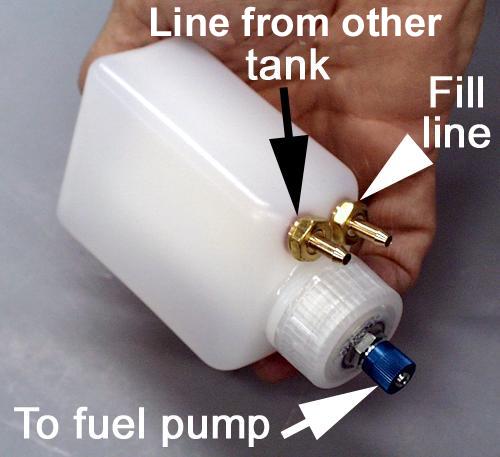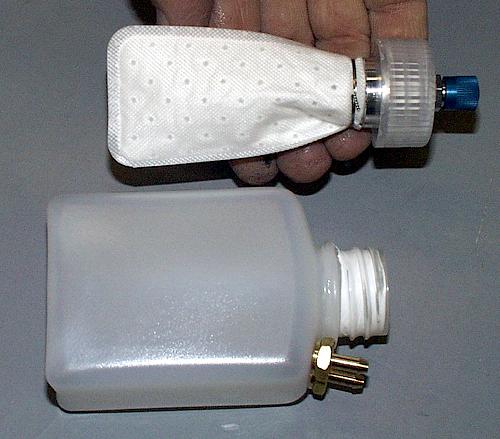|
This "Tips and How To's" Series on Model Turbine
Fuel Systems may help you avoid some of the common, and
not so common, items that can cause a "Flame-Out".
A proper fuel system installation, periodic
maintenance checks, and certain precautions when
handling and storing your turbine powered model are
necessary for reliable engine operation.
Clunks must stay in the fuel
For jet models that have a large unbaffled tank as the
primary fuel storage area, sometimes the clunk can get
stuck in the front of the tank because of transporting
or storing the model nose down. Possibly, a landing
that ends up with the model flipping over can also force
the clunk forward. The flexibility of the tubing that
serves to position the clunk in the tank can also
contribute to the clunk getting stuck in the front of
the tank. To check that the clunk is not lodged forward,
hold the nose of the model up and shake it sideways such
that you can hear the clunk tapping the AFT side wells
of the tank. If it is not obviously functioning properly,
remove the tank and check it out.
Festo Fittings
precautions
Use them on the positive pressure side of the pump
only and avoid sharp bends in the tubing close to the
fitting. On the positive pressure side, you can spot a
small leak, on the suction side, if there is less than a
perfect seal, air will get into the fuel system.
In-Line Fuel Filter
Most fuel filters utilize a fine mesh screen and an
"O" Ring seal. This allows occasional disassembly and
cleaning. The Fuel Filter should be placed downstream
of the Fuel Pump and ALWAYS oriented vertical to the
model's longitudinal axis. The vertical orientation will
allow an initial run-up bubble to dislodge before
your first aerobatic maneuver.
The Ultimate Air Trap - U.A.T.
A properly designed and manufactured U.A.T. is a vital
part of any turbine fuel system. The container should
be translucent so that you can visibly determine how
much air vs. fuel is present, before and after a flight.
A container that is a bit flexible will also reveal
supply and demand pressures during the fueling process
and engine fuel pump demands during high power settings.
Of course, the BVM U.A.T. has all of these features
and a unique porous sack inside that can deliver bubble
free fuel even if the 4oz. container has trapped so much
air that it occupies more space than fuel.
BVM has supplied U.A.T.'s to the turbine industry
since 1997. BVM offers the U.A.T. in its original
format that is ideal for engines up to 140 Newton's of
thrust, and a Hi-Flow version for the larger engines.
See www.BVMJets.com/HiFlow

 Stay
tuned for more fuel system Tips and How To's. |